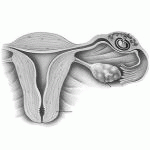Gynaecology
|
20 october 2014 13:20:30 |
| Exclusive breastfeeding: measurement and indicators (International Breastfeeding Journal) |
|
Tweet Background:
Accurate measurement of the duration of exclusive breastfeeding is complicated by factors related to definitions, timing, duration of recall, methods of analysis, and sample biases. Clearly prospective methods are likely to be more accurate but are too expensive to use in most large-scale surveys. Internationally, most surveys use a point-in-time or current status measurement (usually 24-hour recall) and report their findings using an indicator established by the World Health Organisation (WHO) in 1991 that involves combining all babies less than six months old in order to obtain a large enough sample size to result in stable proportions that can be compared over time. However, this indicator is complex to understand and explain and is widely misunderstood, even within the breastfeeding community. It is commonly cited in ways that greatly exaggerate how exclusive breastfeeding actually is.DiscussionA life-long or since birth indicator, introduced in 2000, counts infants as no longer exclusively breastfed as soon as anything else is fed to them. This is appropriate to do if for example data are being used to link infant feeding patterns with vertical transmission of HIV or later patterns of infant allergy. However, this indicator underestimates the total extent of exclusive breastfeeding, since some women interrupt but then resume it after a period of supplementation (which could for example only be a small amount of water given a single time).SummaryExactly which indicator is best to use depends on the purpose for which the data are being used. However, for surveys, the best approach, rarely used, would be to report indicators based on both point-in-time and life-long data. |
| 71 viewsCategory: Gynaecology |
 A population-based study of neonatal mortality and maternal care utilization in the Indian state of Bihar (BMC Pregnancy and Childbirth) A population-based study of neonatal mortality and maternal care utilization in the Indian state of Bihar (BMC Pregnancy and Childbirth)`Ultrasound is an invaluable third eye, but it can`t see everything`: a qualitative study with obstetricians in Australia (BMC Pregnancy and Childbirth) 
|
| blog comments powered by Disqus |
MyJournals.org
The latest issues of all your favorite science journals on one page
The latest issues of all your favorite science journals on one page



